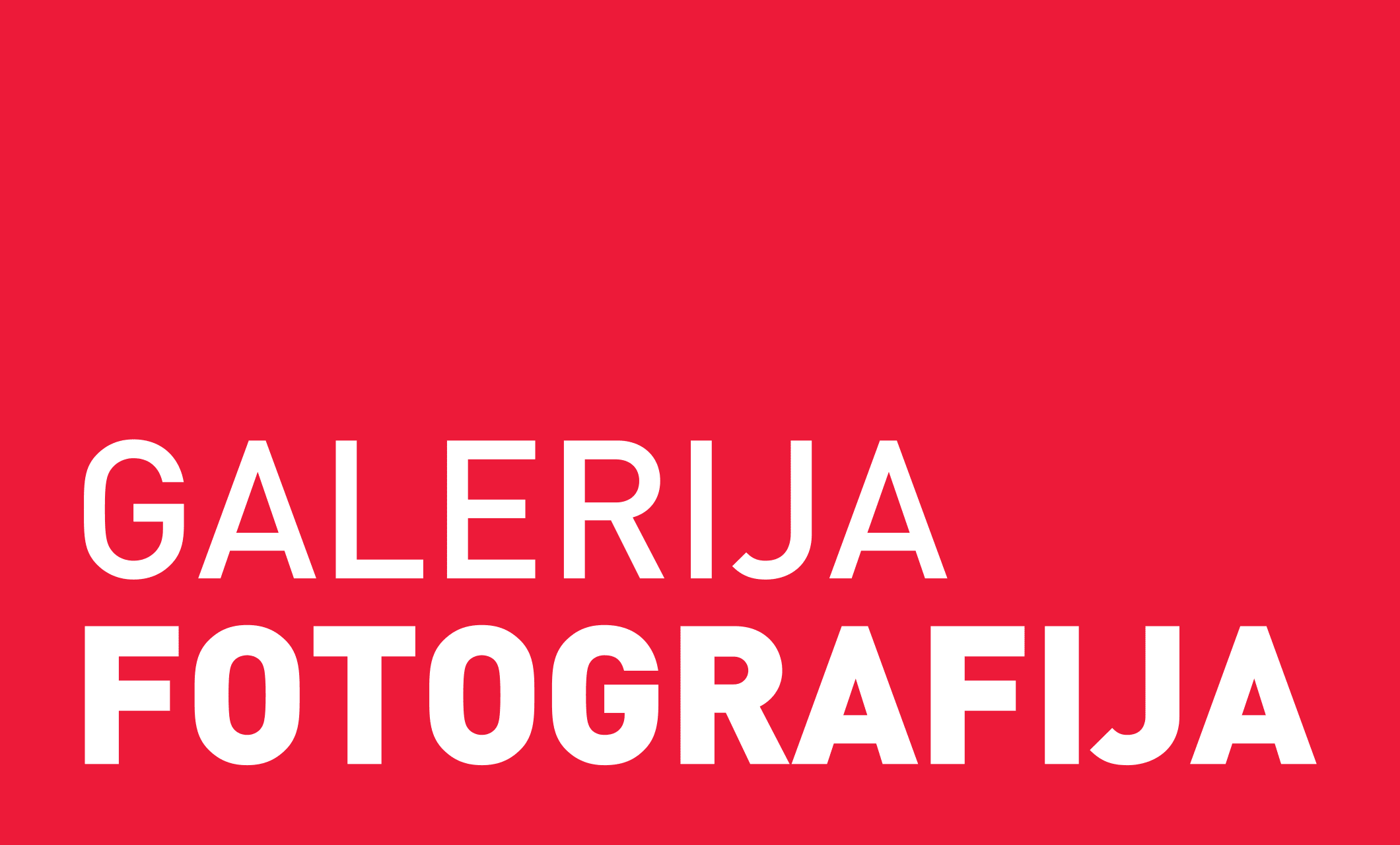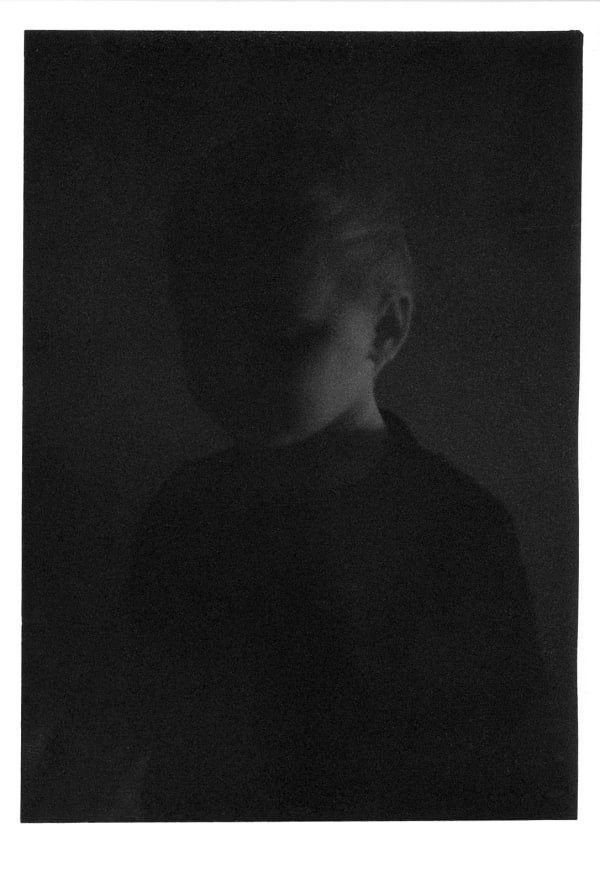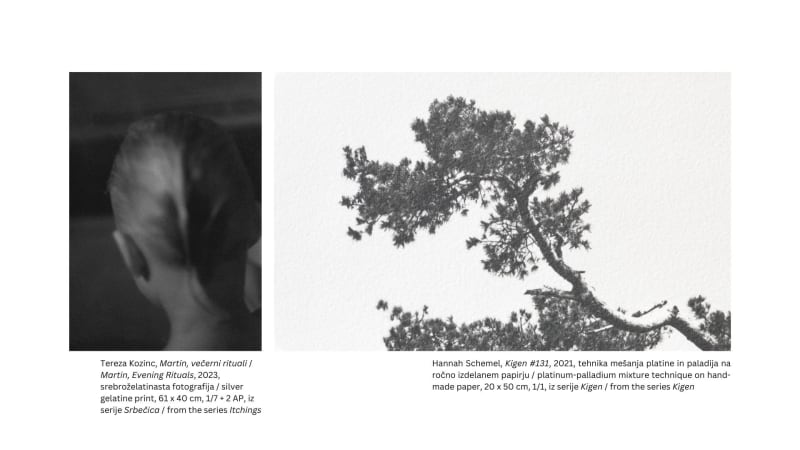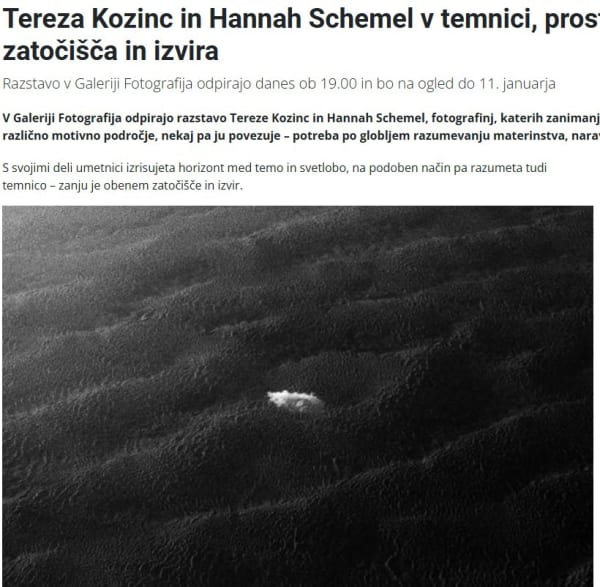Tereza Kozinc & Hannah Schemel: Roots
Past exhibition
Works
Overview
Both artists work in search of and out of a need for deeper understanding, and in doing so they map out the horizon between darkness and light. For them, the darkroom is both a refuge and a well-spring, where their absolute commitment to the physical dimensions of the medium and to the performance of the analogue processes of developing and fixing both film and photographs comes to full expression.
The intermediate space is a place of passage, a spectrum full of nuances, stretched between two absolute but unreachable poles, not quite here and not quite there yet. If we think about it carefully, we are never really there, but always somewhere in between, on the way between what we have been and what we are yet to become. The present moment seeps through our fingers, carried away by the fears of the past and the expectations of the future. We stretch out in all directions – in search of meaning, home, expression – but something is pulling us back to the same place. The roots from which we have grown are here as an undeniable fact, often hidden, buried, sometimes even forgotten, but present nonetheless.
The exhibition titled Roots is the first large-scale presentation of the artists Tereza Kozinc and Hannah Schemel at Galerija Fotografija. At first glance, it seems that the works of the youngest generation of artists represented by the gallery could not be more different. Both approach their subjects with a sovereignty and with elaborate authorial styles that are immediately recognisable and distinguishable from one another. If we look closely, however, we can see many more similarities than differences between the two bodies of work presented: both artists work in search of and out of a need for deeper understanding, and in doing so they map out the horizon between darkness and light. For them, the darkroom is both a refuge and a well-spring, where their absolute commitment to the physical dimensions of the medium and to the performance of the analogue processes of developing and fixing both film and photographs comes to full expression.
Tereza Kozinc explores the medium of photography impulsively; her works record the unplanned moments of everyday life that catch her attention with a sincere, sometimes almost brutal bluntness. We follow the artist through the transition between two stages of her life, at the turning point when a woman-artist becomes a mother-artist. The creative act is thus at the same time an act of creation, and the bond between the creator and the created is not only invisible and emotional, but also supremely physical, biological and earthly. Between the tectonic shifts, the disintegration and re-establishment of priorities caused by the previously unimaginable weight of maternal responsibility, devotion and care for the other, the darkroom remains the artist’s sacred space. There, the tension that gave rise to a work of art is released, spilled and liquefied.
The newborn child immediately became the mother’s muse, and rituals began to be incorporated into the daily routine. Invisibly but constantly changing and adapting over time, they became the new motifs of her artworks. Photographing her child, the artist now combines her ever-present artistic being and creative expression with her new role as a mother, which is exquisitely reflected in her work Martin, Evening Rituals. These newfound relationships are also mirrored in the exploration of the artist’s family roots and the relationships between individuals in the female line of her family, which is why not only her child appears in the photographs, but also his ancestors, the artist’s mother and grandmother. The works on display are thus at the same time a tribute to the legacy of family history, giving Tereza’s visual narrative an almost tactile quality of special intergenerational depth. As a constantly present motif, we are also accompanied by ravens, the eternal heralds of the abandonment of the old and the arrival of the new. With their dark wings, they outline a bridge between the series Finding Stanley and Itchings, between the old and the new world, which Kozinc records, for instance, with the work Finding Stenli #22 and the composite quadriptych Ravens #1.
Hannah Schemel has devoted the last years of her work mainly to landscape subjects, which she records again and again. In the Umi series, this is the sea around Quiberon in Brittany, and with the Kigen series, she focuses on the forest of Schwarzwald. The evolution of the two series is followed by her newest body of work titled The Clock in This City has no Pointer. The two ancient landscapes have captivated her not only with their varied, ever-changing forms of appearance, but also with the multilayered stories with which they are imbued. Her approach to her work is deliberate and serene – she uses a large-format camera, returning to the same location where she observes the landscape. Sometimes, a day can pass while she’s there, sensing its pulse and witnessing the changes in light, sounds and wind, without ever pressing the shutter button. The artist believes that by observing the same place over and over again, we are also confronting ourselves. The landscape that is formed in the mind of the viewer is influenced and shaped by our own experiences, memories, fears and dreams, and this ultimately becomes a creative act in itself.
By the sea and in the forest, along with all the elements that compose them, Schemel records microcosms, primordial worlds in which humans are completely insignificant. In the darkroom, these are then transferred onto handmade paper made especially for her, which can take several days to dry after the image is fixed onto the medium. It is not just a matter of technical excellence, however, but above all of the reassuring omnipresence that emanates from the artist’s works. Her landscape studies capture views both near and far. They take in details such as the striking stone reliefs and unusual arrangements of tree branches in Umi #59 and Kigen #131, which would be easily missed by the unobservant visitor, as well as the vast forests disappearing in the mist and the sea horizons as they stretch out into infinity, as seen in Kigen #113 and Umi #42. The artist is also fascinated by the concept of epigenetic landscapes, stories imprinted in the very fabric of the world around us, and the transmission of collective memories and trauma from generation to generation. Although most of her exhibited works are presented on larger single pieces of paper, it is the polyptychs that stand out in terms of their expressiveness, where the image is assembled in the viewer’s mind into a unified composition that extends far beyond the edges of the paper, thus fully achieving its desired effect.
We can do two things with the roots that wind beneath us: they can be our cage, massive and immovable, or they can give us a stable support; they can hold us in place, or we can use them as they were intended and grow with them – and from them. While Tereza Kozinc’s powerfully striking works take our breath away and keep us in their grip, Hannah Schemel’s timeless pieces release this tension and, in an almost meditative way, allow us to breathe again, consciously and deeply. The approaches of both artists, Tereza Kozinc and Hannah Schemel, to this challenging task are through different paths directed towards the same goal – understanding the deep silence of solitude, making sense of each individual breath and finding calm and security in the rituals of the everyday.
Vida Jocif
Press







